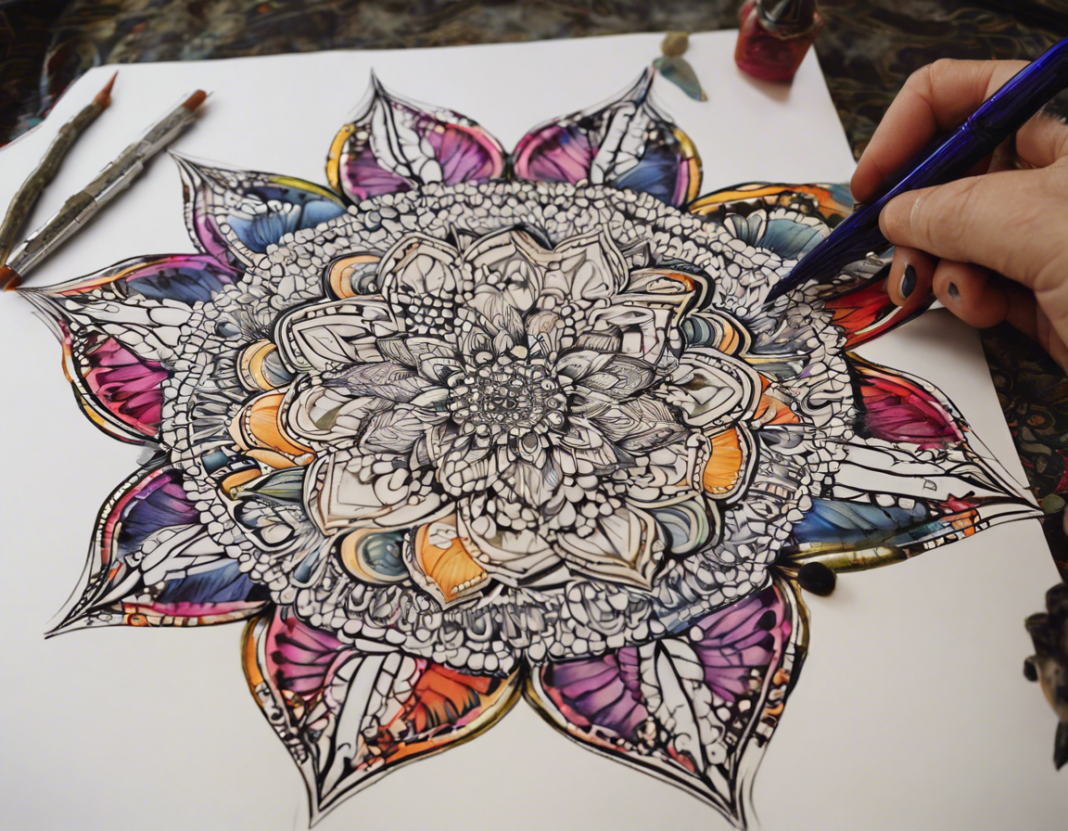Introduction
Mandala art, with its intricate patterns and mesmerizing designs, has captivated people all around the world for centuries. Originating from the Sanskrit word for “circle,” mandalas represent the universe in Hindu and Buddhist symbolism. These geometric figures have been used in various spiritual practices for meditation, healing, and self-expression. In recent years, mandala art has gained popularity as a form of creative expression and a tool for relaxation and mindfulness. Let’s dive deeper into the beauty of mandala art and explore its significance and benefits.
The History of Mandala Art
Mandala art dates back thousands of years and can be found in various cultures, including Tibetan Buddhism, Hinduism, and Native American traditions. In these cultures, mandalas are used as spiritual symbols representing spiritual journeys and cosmic order. Mandalas are often used as tools for meditation, where individuals focus on the intricate patterns to center their minds and connect with their inner selves.
Symbolism of Mandalas
One of the key features of mandalas is their symmetrical design, which represents balance and harmony in the universe. The circle shape of mandalas symbolizes wholeness and unity, while the intricate patterns within the circle symbolize the interconnectedness of all things. Different colors and shapes used in mandalas can also convey specific meanings, such as red for passion and energy, blue for calm and serenity, and yellow for joy and happiness.
Creating Mandalas
The process of creating mandalas can be a meditative practice in itself. Many people find peace and focus while drawing or coloring mandalas, allowing them to relax and unwind from the stresses of daily life. There are no strict rules when it comes to creating mandalas, making it a versatile art form that allows for personal interpretation and expression.
Benefits of Mandalas
Mandala art is not only visually appealing but also offers several benefits for mental health and well-being. Some of the key benefits of creating or coloring mandalas include:
- Stress Relief: Engaging in the creative process of making mandalas can help reduce stress and anxiety levels.
- Mindfulness: Focusing on intricate details while creating mandalas promotes mindfulness and presence in the moment.
- Self-Expression: Mandalas provide a safe space for self-expression and creativity, allowing individuals to explore their emotions and thoughts.
- Improved Concentration: The repetitive patterns in mandalas can enhance concentration and focus.
- Spiritual Connection: For some, creating or meditating on mandalas can foster a deeper spiritual connection and sense of inner peace.
How to Incorporate Mandalas into Your Life
Whether you are an artist looking to explore new forms of creativity or someone seeking relaxation and mindfulness, incorporating mandalas into your life can be a rewarding experience. Here are some ways to explore the beauty of mandala art:
- Coloring Books: Mandalas coloring books are widely available and offer a convenient way to start creating mandalas.
- Drawing: Grab a pen and paper, and let your creativity flow by drawing your own mandala designs.
- Digital Apps: There are numerous digital apps available that allow you to create and color mandalas on your electronic devices.
- Workshops: Join a mandala art workshop or class to learn more about the history and techniques of creating mandalas.
- Meditation: Use mandalas as a focal point for meditation and mindfulness practices to enhance relaxation and inner peace.
Frequently Asked Questions (FAQs)
-
What is the significance of mandalas in Buddhism and Hinduism?
In Buddhism, mandalas are used as a tool for meditation and represent the universe and spiritual journey. In Hinduism, mandalas symbolize cosmic order and unity. -
Can anyone create mandalas, or is it a specialized skill?
Anyone can create mandalas, regardless of artistic skill. The beauty of mandalas lies in their simplicity and versatility, allowing for personal expression and creativity. -
Are there specific colors and symbols used in mandalas?
While there are traditional meanings associated with colors and symbols in mandalas, individuals are free to use any colors and shapes that resonate with them personally. -
How can mandalas benefit mental health?
Mandalas can benefit mental health by promoting relaxation, stress relief, mindfulness, concentration, and self-expression. -
Can children also benefit from creating mandalas?
Yes, creating mandalas can be a fun and educational activity for children, helping them develop focus, creativity, and emotional expression. -
What materials are needed to create mandalas?
Materials for creating mandalas can vary, including paper, pens, colored pencils, markers, paints, and digital tools for creating digital mandalas. -
Are there specific techniques for creating mandalas, or is it open to interpretation?
While there are traditional techniques for creating mandalas, such as starting from the center and working outward, individuals are encouraged to explore their own unique approach and style. -
How can I use mandalas for meditation and mindfulness practices?
To use mandalas for meditation, simply focus on the center of the mandala and let your mind relax and wander as you explore the intricate patterns and designs. -
Are there therapeutic benefits to coloring mandalas?
Coloring mandalas can have therapeutic benefits by promoting relaxation, stress relief, creativity, and focus, similar to other forms of art therapy. -
Where can I find resources for learning more about mandala art?
There are numerous books, online courses, workshops, and tutorials available for those interested in exploring mandala art further and learning about its history, techniques, and benefits.
Conclusion
Mandala art is a beautiful and versatile form of creative expression that offers numerous benefits for mental health and well-being. Whether you are looking to relax, meditate, or explore your artistic side, mandalas provide a unique and accessible way to connect with yourself and the universe. By incorporating mandalas into your life, you can experience the profound beauty and power of this ancient art form.

